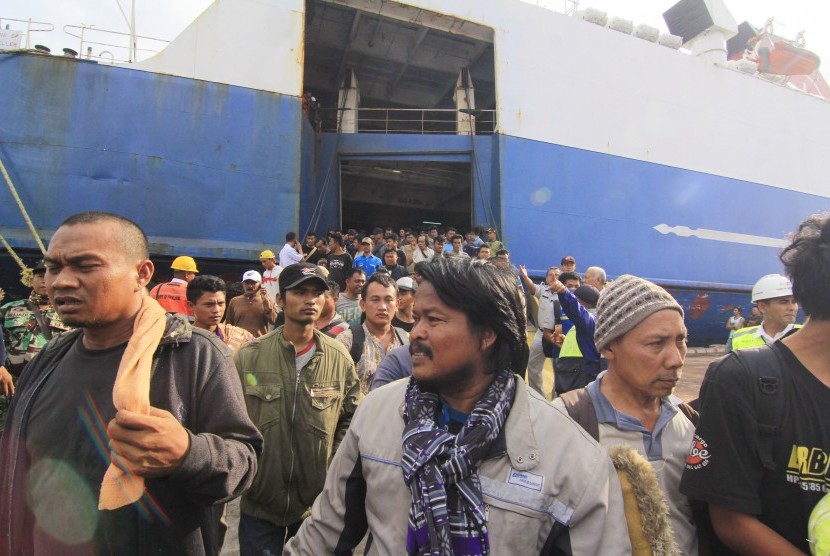REPUBLIKA.CO.ID, JAKARTA -- The sea toll program is not yet adequately supported by feeder facilities due to which the program is still facing major connectivity issues in the distribution of goods in the region.
"The Sea Toll program is still facing a major problem in terms of macro connectivity. The distribution of goods in the interior or surrounding small islands is still constrained," Wahyu Widodo Pandoe, the deputy of Industrial Technology Design and Engineering of the Agency for Assessment and Application of Technology (BPPT), remarked here on Wednesday
He noted that the concept should incorporate a "feeder" ship, and this plan should be conceived and studied together by the coordinating minister for maritime affairs, Pandoe stated on the sidelines of the National Technology Congress 2017 of BPPT in Jakarta.
At the National Technology Congress, he said, the solution to connectivity issues arising after the launch of the Sea Toll project is being studied jointly by the BPPT and the Ministry of Transportation to comprehend how the concept of sea toll connectivity will help to connect to inland areas and small and urban islands to facilitate quicker distribution of goods, including the issue of container handling at ports.
"We are now exploring the feeder concept. We are, for instance, working on one feeder ship in the east. This new design is not yet a prototype and is through cooperation with the research and development wing of the Ministry of Transportation," he revealed.
Difficulties in the distribution of goods on a micro scale are also encountered in places, such as Anambas, Riau Islands, where streets on the island are too narrow for the movement of container trucks. In Labuan Bajo, East Nusa Tenggara, container trucks cannot move out of the port due to road elevation.
"Hence, the concept of port connectivity should really be explored, discussed, and solved together. A lot of homework still needs to be done, but we are heading in the same direction on the type of technology, handling strategies, and ways to arrange the contents of any container. The load is also discussed, as in Labuan Bajo, the port is not equipped with a land crane, so it is difficult to unload the sea toll cargos," he pointed out.
Wahyu believes that no specific policy on connectivity needs to be issued, and all parties should only be consistent in running the Sea Toll program holistically. Programs that are already running and are gradually reducing the price disparity in eastern Indonesia should be improved.
With regard to the second National Technology Congress by the BPPT, he said macro connectivity in Indonesia, such as the capability of railroad transport, sea toll, and river transportation, was still being discussed.
"Similar to railroad transportation, we still only utilize up to eight to nine percent of it. The sea is also not used dominantly, while the rest 80 percent (of the cargo) is transported by land," the BPPT official stated.
Such unfavorable conditions are being discussed during the congress, which also involves the National Development Planning Agency. The congress is seeking to find the ideal standard percentage of goods transportation to reduce the burden on land transport or land routes.
"Probably, it will be advantageous to use rivers, such as the Musi, Mahakam, and Tulang Bawang, where container ships can transport containers to the inland areas," he explained.
A trial of the waterway concept, which has been widely applied in the US and Europe, will be carried out in the East Flood Canal for the distribution of goods from Jakarta to Bekasi in West Java.



